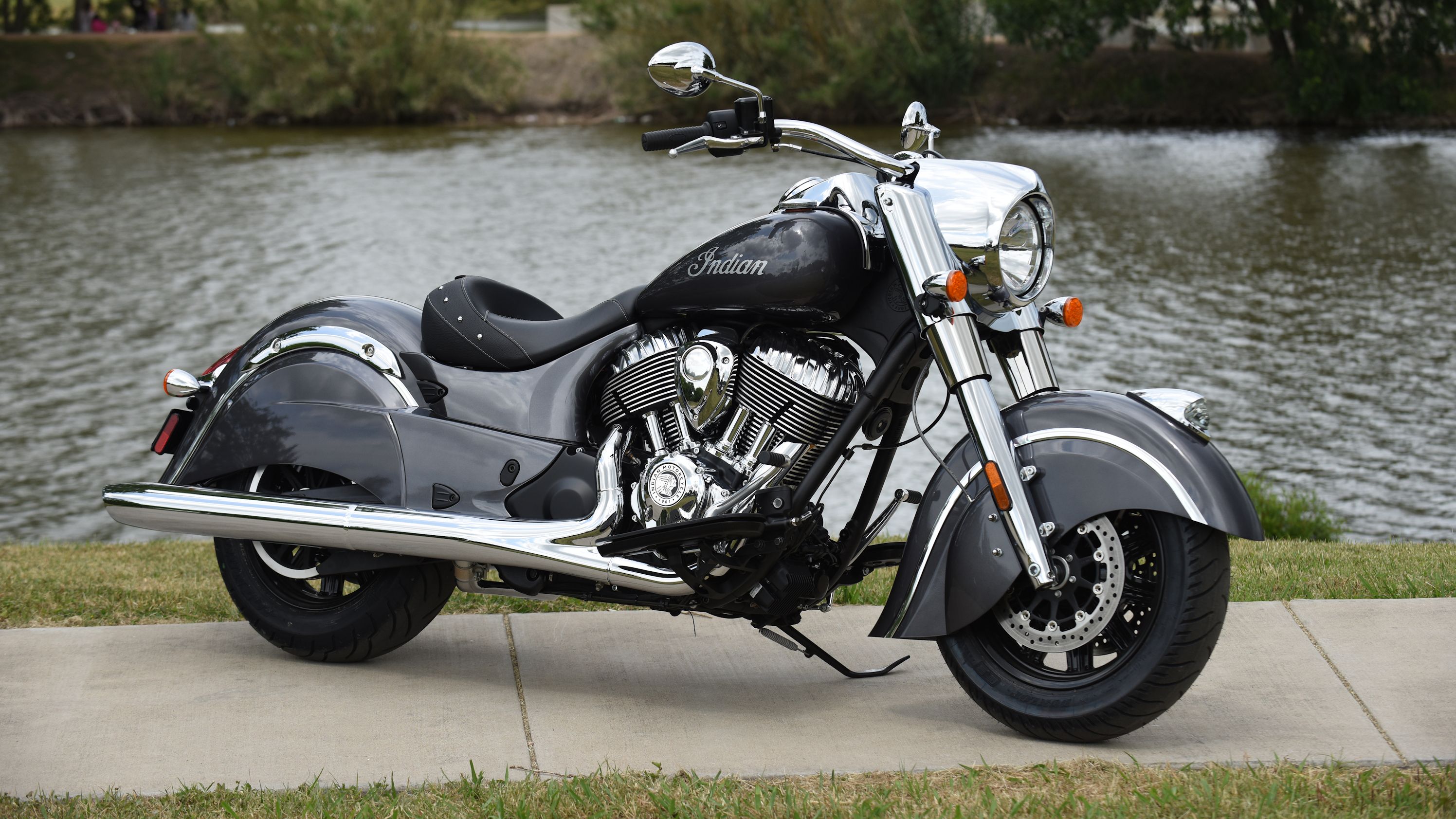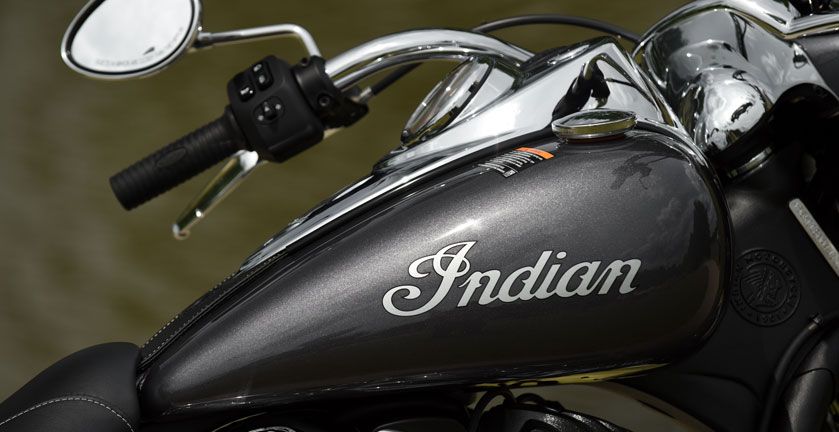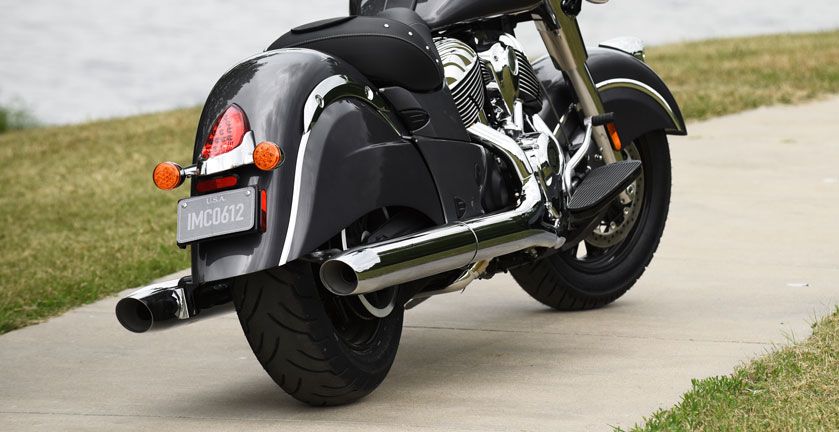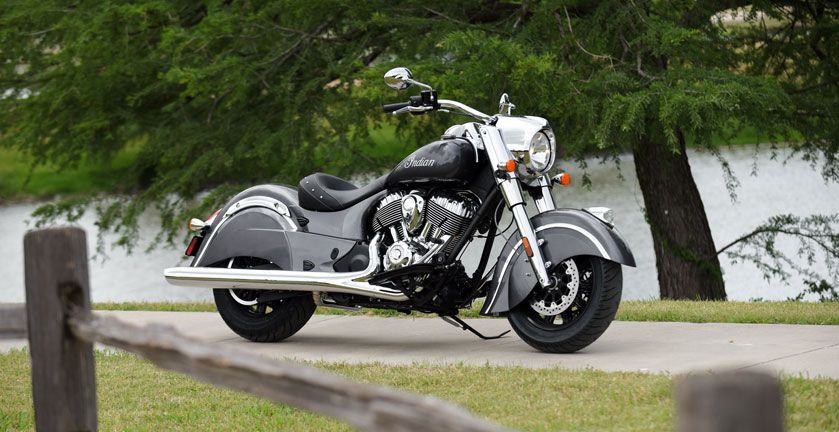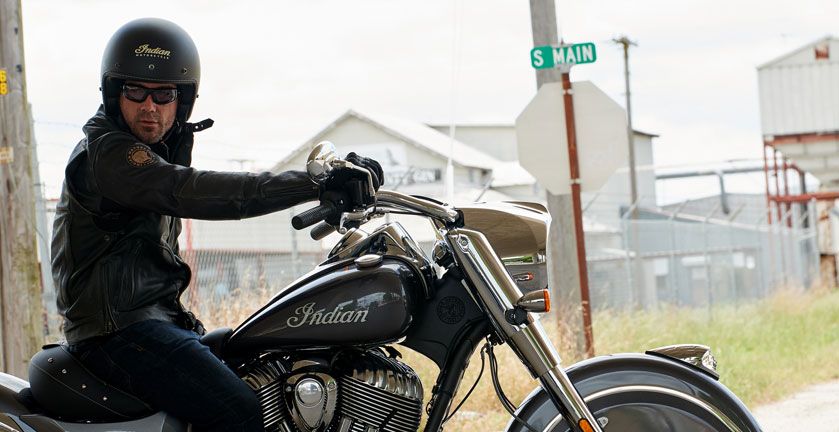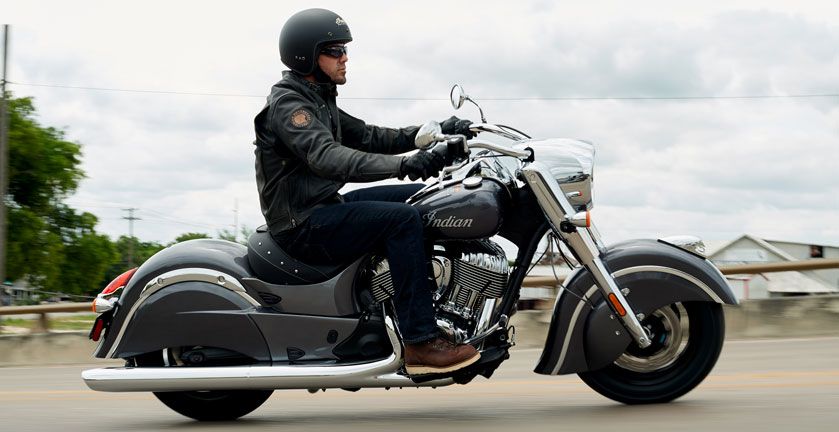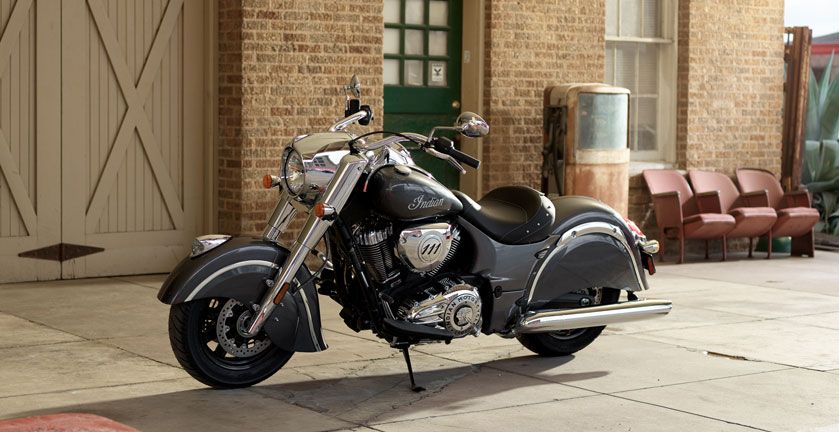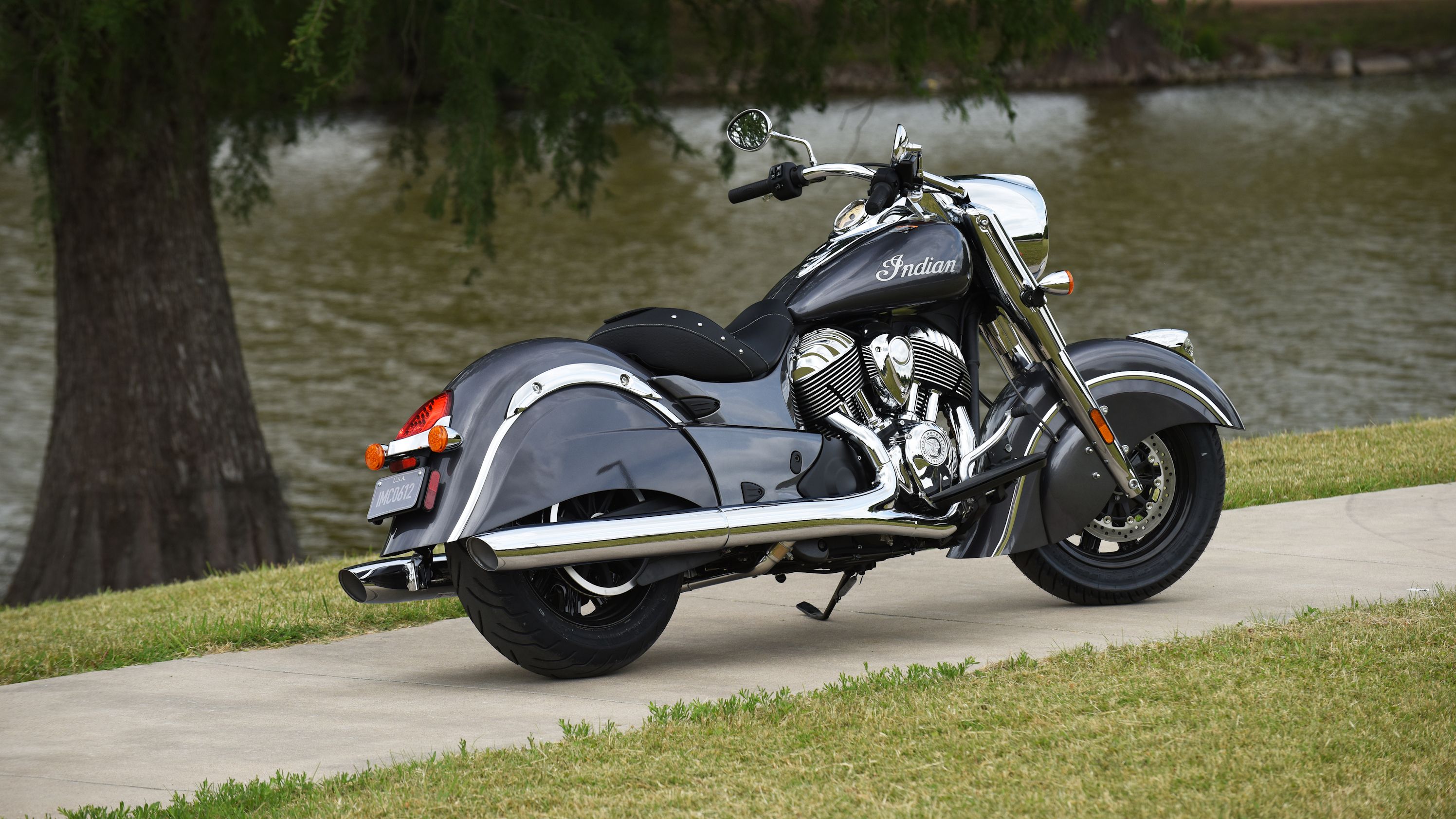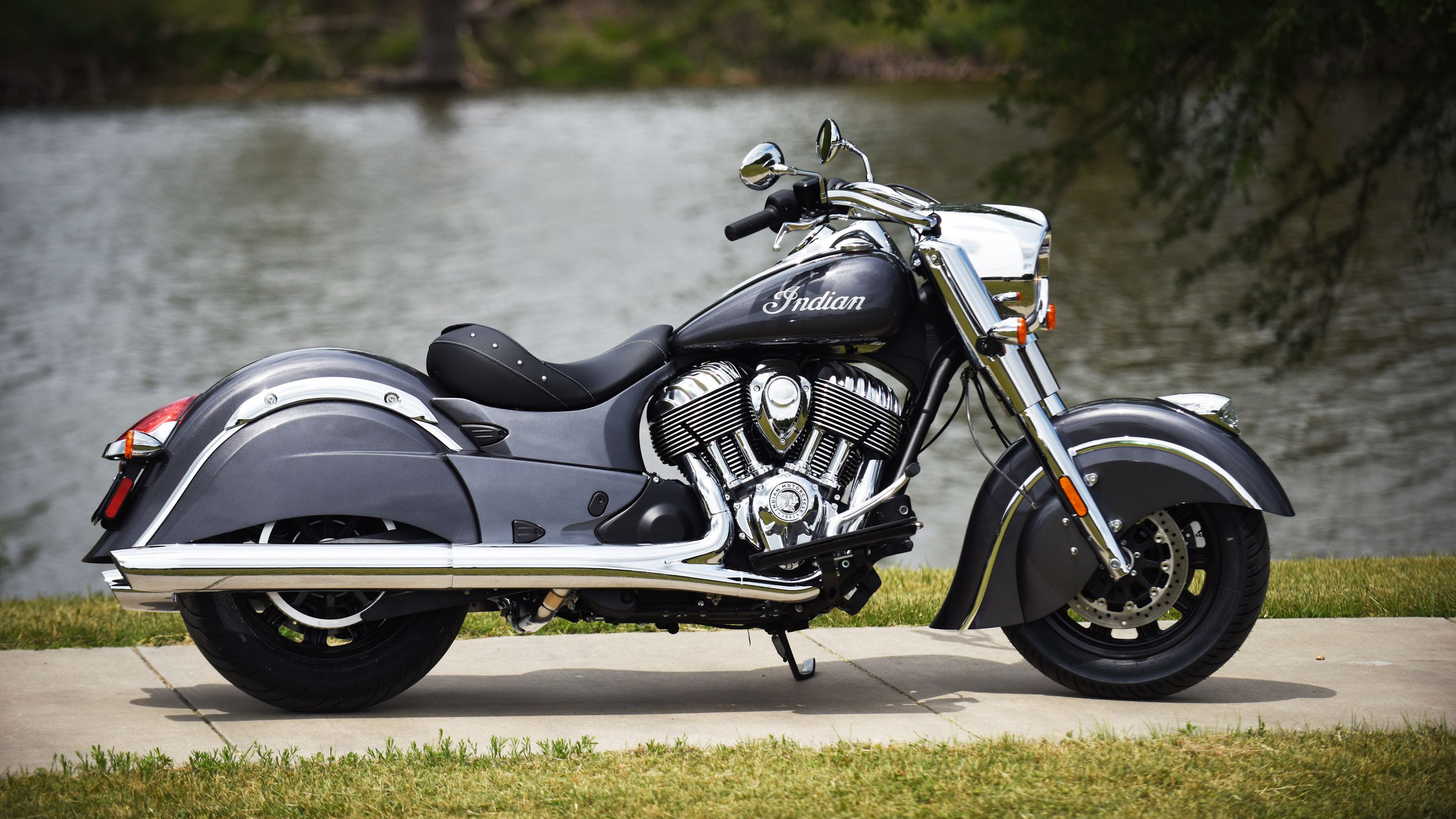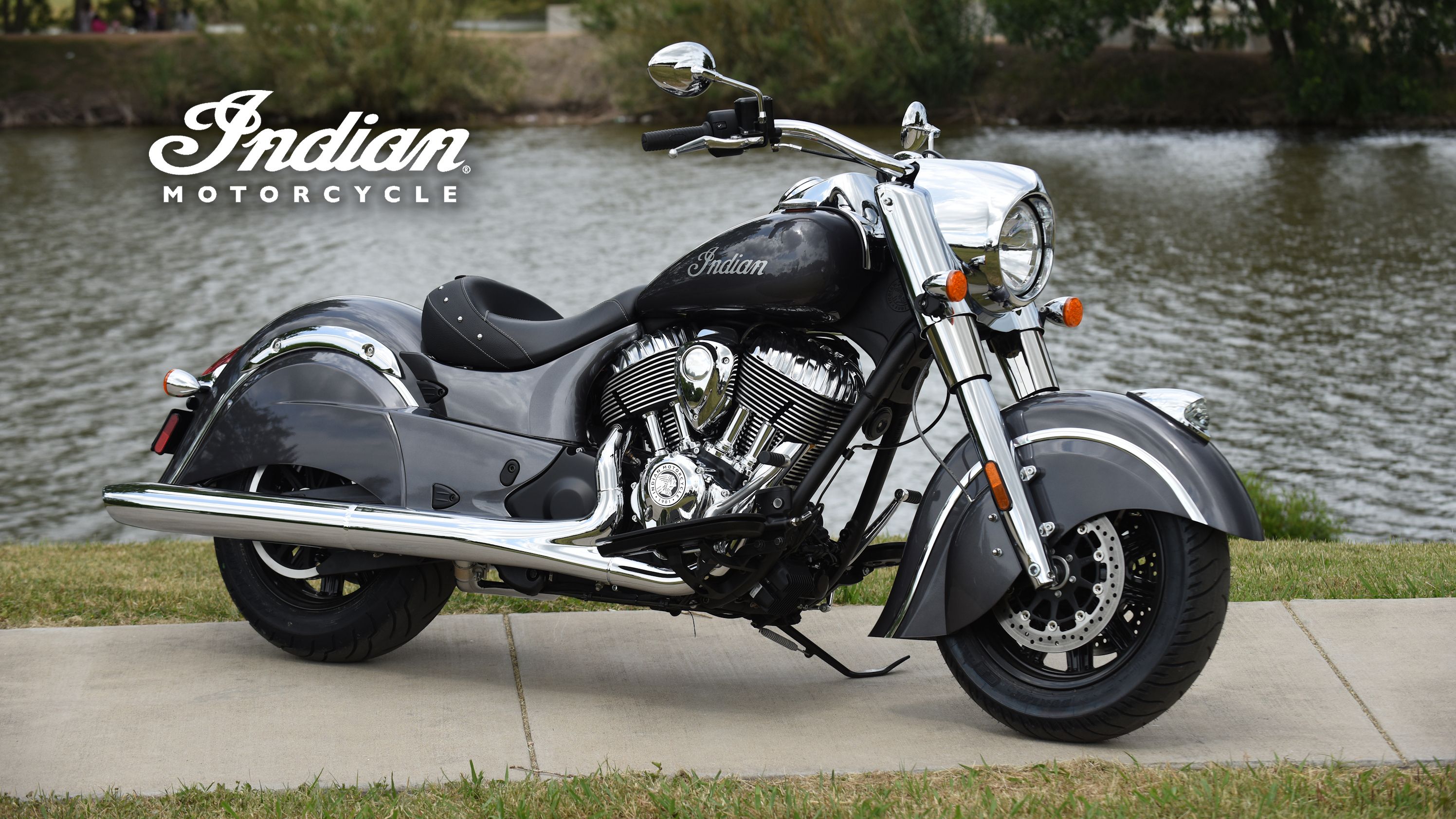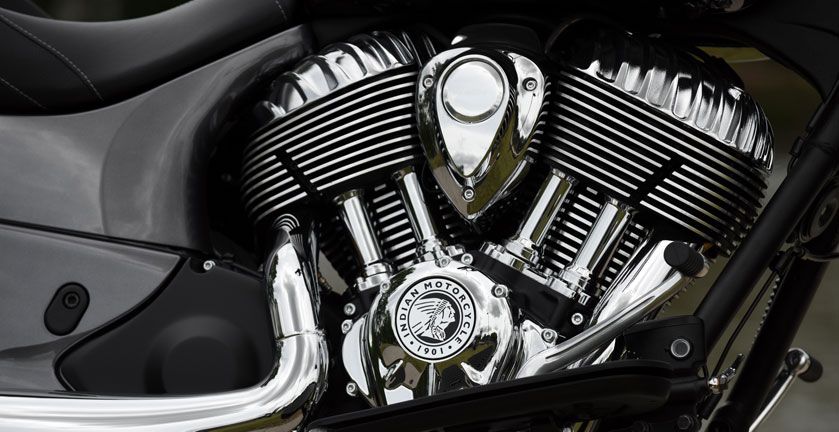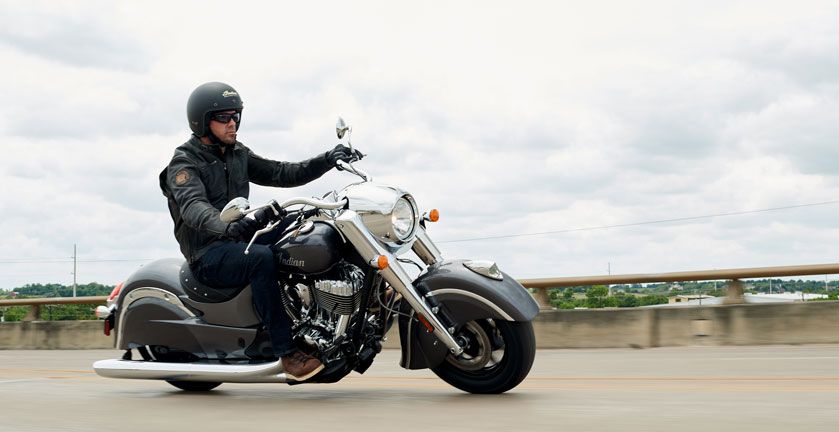Indian Motorcycle has had a Chief in the lineup since 1922, so it makes sense for the factory to try to take some of that name recognition to the bank. Even more importantly, the new Chief has established itself as a cruiser that is worthy on its own merits with an unmistakable look and powerful 111 cubic-inch engine. Indian goes farther than most -- even farther than Harley-Davidson recently -- to bring high-fidelity historical design to the market, and the Chief is a good example of that. Indian has seen many false starts since the company folded in 1953, including a disastrous attempt to import and rebadge Royal Enfield's Meteor, but it's on an upward trajectory under the Polaris umbrella and models like the Chief prove it.
Continue reading for my review of the Indian Motorcycle Indian Chief.
2018 Indian Motorcycle Indian Chief
- Make: Array
- Model: 2018 Indian Motorcycle Indian Chief
- [do not use] Vehicle Model: Array
Design
From the classic front fender to the body panels that close off the rear and flow into the rear fender, the Chief hits all the right notes to strike a nostalgic chord. The Indian head fender ornament is straight out of the history books, and it looks right at home between the fat front forks made all the fatter by the chrome fork shrouds and headlamp nacelle.
Low-rise bars and short-stem mirrors keep the hand controls down in a comfortable position where there is plenty of leverage, and that setup keeps the overall height low and the visual weight at the bottom. Did I mention clean? The wires for the switch housings are run internally for a super-clean look.
A wide, 5.5-gallon fuel tank sports a rather large chrome instrument panel for the instrumentation and single speedo clock, and me personally, I'd find a way to remove/cover that thing. Chrome down low like that has a tendency to bounce the sunlight up under my shades and lance me in the eyes, so I hate console chrome with a passion. I can't be the only one.
The flyline transitions smoothly from tank to saddle -- and I do mean saddle, it looks like it came straight out of a Western -- but as cool as it looks it's strictly a solo seat that will send you to the accessories catalog or the aftermarket if you want to share the experience with a friend. No, a wadded-up jacket and bungee cord does not qualify as a pillion pad, guys.
Out back a stylish taillight and bullet turn signals finish off the rear end. It's a good looking bike, but it just screams out for laced wheels, gangster whitewalls and a tombstone taillight. As it sits on the showroom, the Chief is bound to appeal to folks interested in the uniquely American looks of a bygone era, and I think it's just dead sexy even if the color selection is a bit of a snore.
Chassis
This is a lot of bike, and fairly heavy with a 777-pound wet weight, but not from a lack of effort to keep things light. Toward that end, the factory started out with a cast-aluminum frame with an integrated air box that eliminates an entire item from the hang-on equipment list. As modern as the frame design is, it still looks like the classic double-downtube/double-cradle skeleton you'd expect to see on one of its predecessors. A set of 46 mm, cartridge-type forks float the front end and a well-hidden monoshock tames the rear, but you get very little in the way of tune-ability with only the obligatory spring preload at the rear shock. While I appreciate that it adds to the price and complicates things, I'm surprised neither of the American manufacturers are on-board with the adjustable suspension components yet.
The brakes are definitely up to scratch with massive, 300 mm discs all the way around. Dual, four-piston anchors bite the front discs with a twin-pot caliper in back and ABS protection at both ends. I gotta say Indian missed an opportunity when it opted for cast wheels instead of laced, but that's easily remedied, and the hoop size fits well with the bottom-heavy look with a 130/90-16 up front and 180/65-16 bringing up the rear. Rake and trail measure out at 29-degrees and 6.1-inches respectively, so it should come as no surprise that it trades a bit of cornering agility for straight-line stability. Naturally, that trade off gets you a comfortable, low-fatigue ride that is ideal for interstate jaunts.
|
Rake: |
29° |
|
Trail: |
6.1 in (155.0 mm) |
|
Suspension: Front – Type/Travel: |
Telescopic Fork / 4.7 in (119 mm) - Cartridge Type |
|
Front Fork Tube Diameter: |
46 mm |
|
Suspension: Rear – Type/Travel: |
Single Shock / 3.7 in (94 mm) |
|
Brakes, Front: |
Dual / 300 mm Floating Rotor / 4 Piston Caliper |
|
Brakes, Rear: |
Single / 300 mm Floating Rotor / 2 Piston Caliper |
|
Wheel, Front: |
Cast 16 in x 3.5 in |
|
Wheel, Rear: |
Cast 16 in x 5 in |
|
Tire, Front: |
Dunlop® Elite 3 130/90B16 73H |
|
Tire, Rear: |
Dunlop® American Elite 180/65B16 81H |
Drivetrain
As cool as the Chief is so far, the chassis and sheet metal are just the setting for the crown jewel that is the Thunder Stroke 111 engine. Aesthetically, the engine goes with the rest of the bike like peas and carrots. The factory borrowed from the old flathead engines when it put those faux cooling fins on the rocker-box covers. Parallel pushrods reinforce that look, but it's the area where the exhaust headers hook up to the head that really sells it.
The long-stroke engine runs with a 101 mm bore and 113 mm stroke for a total displacement of 1,811 cc (111 cubic-inches). As you'd expect, this plant cranks out some serious, stump-pulling torque with 119 pound-feet on tap at a low, 3,000 rpm; plenty for pulling hills and making decisive passes. There can be little doubt that we Americans love our big V-twins, and this monster should certainly appeal to the domestic market by virtue of its looks and its performance.
Electronic fuel injection feeds the beast, but as with H-D, the factory shuns any sort of traction control or rider modes feature so there's still some room for improvement. As with the adjustable suspension, the first one to embrace the new tech will have a significant edge over the other.
|
Engine: |
Thunder Stroke 111 |
|
Displacement: |
111 cu in (1811 cc) |
|
Bore x Stroke: |
3.976 in x 4.449 in (101 mm x 113 mm) |
|
Compression Ratio: |
9.5:1 |
|
Peak Torque: |
119 ft-lbs (161.6 N m) @ 3,000 rpm |
|
Electronic Fuel Injection System: |
Closed loop fuel injection / 54 mm bore |
|
Primary Drive: |
Gear Drive Wet Clutch |
|
Drive/Driven Clutch: |
Wet, Multi-Plate |
|
Final Drive: |
2.2 : 1 |
|
Transmission: |
6-speed |
Pricing
The price point really isn't surprising, but the lack of color selection is a bit of a bummer. You can score an 2018 Indian Chief for $18,499 in any color you want; as long as you want Indian's Steel Gray paint. The color itself isn't bad, but Indian should remember that its main competitor is nicknamed “the King of Paint,” and with good reason.
|
Standard Equipment: |
ABS; Cast Aluminum Frame with Integrated Air-Box; Cruise Control; Keyless Ignition |
|
Color: |
Steel Gray |
|
Price: |
$18,499 |
Competitors
Since Harley-Davidson is the one to beat here, I went to the all-new Softail Deluxe for its classic charm and historical build. Harley harkens back to the days of the old Hydra Glide when hydraulic forks found their way onto the front of the frame, but the rear wheel bolted directly to the frame. Harley's Softail mimics that look, but improves upon the ride this year with an all-new frame and increased handling performance.
Rather than running a headlight nacelle, H-D goes with a whisker-bar and pair of pimp lights with the turn signals tucked away in the bar itself. Laced wheels and whitewalls (yay!) round out the H-D's chassis in style, and it hits some important notes that the Indian misses. Harley's fenders aren't as dramatic or historically accurate as the Chief's, but the tombstone taillight makes up for a lot in my book.
Lookswise, they both bring something unique to the table, and I'm hard pressed to pick a favorite though Harley's paint choices make me lean toward the Deluxe a bit. While both run with ABS as stock equipment, both are equally boring in the suspension department though H-D gets some credit for the hand-adjustable preload adjuster. The Milwaukee-Eight engine boasts a 107 cubic-inch displacement that falls shy of the 111-inch Thunder Stroke in displacement and power with only 109 pounds o' grunt on tap.
H-D manages another minor win at the checkout with a $17,999 Deluxe in Vivid Black with paint packages that reach up to $18,749. Worth it just for the paint? Maybe, but maybe Indian will get on the schtick and start giving us some paint choices on what is otherwise a stellar product.
He Said
“If not for the color, I'd call this a serious contender against a number of Harley's new Softails. The old-school Indian influence is readily apparent, and I'm really pleased with the direction the company is headed. We won't get into the flat-track discussion. Oh, snap! Too soon Harley?”
She Said
My wife and fellow motorcycle writer, Allyn Hinton, says, “It's big and heavy, but it is surprisingly unintimidating once you get on it. The low center of gravity makes it easy to handle, and roll-on is decisive even low in the powerband. I'm not a fan of the instrument cluster down among the chrome, but I must be in the minority or they wouldn't do chrome bezels like that. This is a very elegant ride, no two ways about it.”
Specifications
|
Engine & Drivetrain: |
|
|
Engine: |
Thunder Stroke 111 |
|
Displacement: |
111 cu in (1811 cc) |
|
Bore x Stroke: |
3.976 in x 4.449 in (101 mm x 113 mm) |
|
Compression Ratio: |
9.5:1 |
|
Peak Torque: |
119 ft-lbs (161.6 N m) @ 3,000 rpm |
|
Electronic Fuel Injection System: |
Closed loop fuel injection / 54 mm bore |
|
Primary Drive: |
Gear Drive Wet Clutch |
|
Drive/Driven Clutch: |
Wet, Multi-Plate |
|
Final Drive: |
2.2 : 1 |
|
Exhaust: |
Split Dual Exhaust w/ Cross-over |
|
Transmission: |
6-speed |
|
Gear Ratio (Overall): |
|
|
1st: |
9.403 : 1 |
|
2nd: |
6.411 : 1 |
|
3rd: |
4.763 : 1 |
|
4th: |
3.796 : 1 |
|
5th: |
3.243 : 1 |
|
6th: |
2.789 : 1 |
|
Chassis: |
|
|
Rake: |
29° |
|
Trail: |
6.1 in (155.0 mm) |
|
Suspension: Front – Type/Travel: |
Telescopic Fork / 4.7 in (119 mm) - Cartridge Type |
|
Front Fork Tube Diameter: |
46 mm |
|
Suspension: Rear – Type/Travel: |
Single Shock / 3.7 in (94 mm) |
|
Brakes, Front: |
Dual / 300 mm Floating Rotor / 4 Piston Caliper |
|
Brakes, Rear: |
Single / 300 mm Floating Rotor / 2 Piston Caliper |
|
Wheel, Front: |
Cast 16 in x 3.5 in |
|
Wheel, Rear: |
Cast 16 in x 5 in |
|
Tire, Front: |
Dunlop® Elite 3 130/90B16 73H |
|
Tire, Rear: |
Dunlop® American Elite 180/65B16 81H |
|
Dimensions & Capacities: |
|
|
Wheelbase: |
68.1 in (1730 mm) |
|
Seat Height: |
26.0 in (660 mm) |
|
Ground Clearance: |
5.5 in (140 mm) |
|
Overall Height: |
46.3 in (1176 mm) |
|
Overall Length: |
103.5 in (2630 mm) |
|
Overall Width: |
39.4 in (1000 mm) |
|
Fuel Capacity: |
5.5 gal (20.8 l) |
|
GVWR: |
1260 lbs (572 kg) |
|
Weight (Empty Tank / Full of Fuel): |
745 lbs / 777 lbs (338 kg / 352 kg) |
|
Details: |
|
|
Standard Equipment: |
ABS; Cast Aluminum Frame with Integrated Air-Box; Cruise Control; Keyless Ignition |
|
Gauges: |
Tank mounted electronic speedometer with odometer; dual tripmeters; digital tachometer; ambient air temperature; fuel range; average fuel economy; battery voltage; gear position display; real-time clock; vehicle trouble code readout; heated grip level (if heated grips installed); low engine oil pressure; and 9 LED telltale indicators: cruise control enabled, cruise control set, neutral, high beam, turn signal, ABS, check engine, and MPH or km/h unit designation; Tank mounted electronic fuel gauge with low fuel LED indicator |
|
Color: |
Steel Gray |
|
Price: |
$18,499 |
References
See our review of the Harley-Davidson Softail Deluxe.

